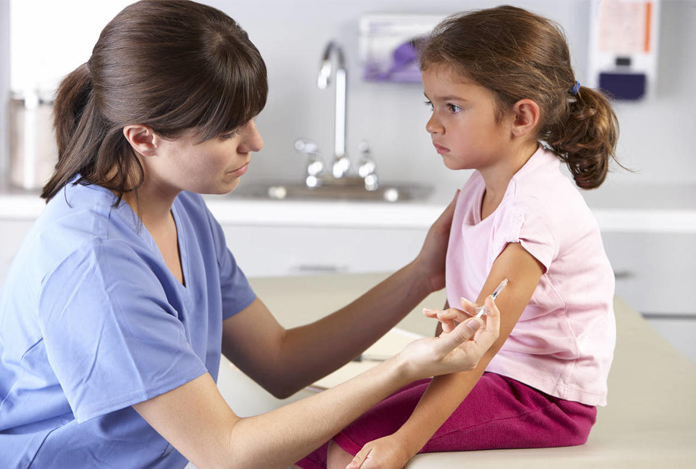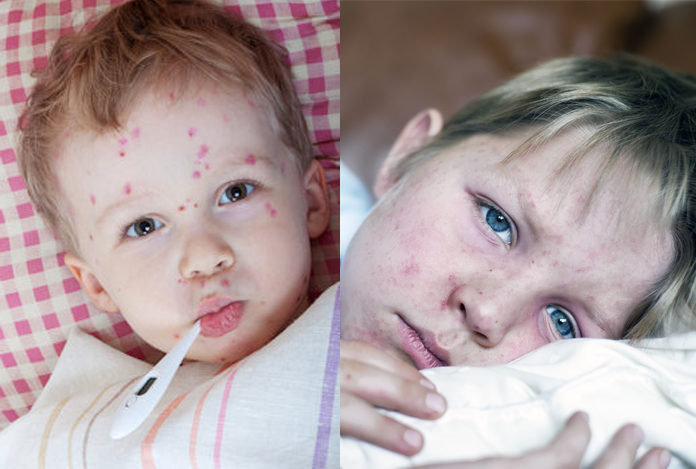
Overview and Statistical Facts
Measles is a common viral infection of the respiratory system. It is also known as rubeola and is very contagious. It can spread through contact with infected person’s saliva or mucus. An infected person can release the viral infection in the air by coughing or sneezing. Symptoms and signs of measles are runny nose, sore throat, cough, fever, and red, blotchy skin rashes. As the virus can remain active on infected surface, anyone who comes in proximity of that surface contracts the infection. Sharing eating utensils and drinking from infected person’s glass increases the risk of infection. It can be serious or even fatal in children. Complication of measles may include pneumonia, bronchitis, blindness, ear infection, encephalitis, low platelet count (thrombocytopenia) and pregnancy problems like preterm labor or miscarriage.
According to the World Health Organization (WHO), there were 114,900 deaths globally due to measles in the year 2014. Most of these were children under the age of 5. In the year 2016, there were 89,780 reported global deaths due to measles. There is a reported drop of 84% in the measles deaths between the year 2000 and 2016due to vaccination. The U.S. now averages about 60 cases of measles a year. There is no specific treatment for measles, so prevention is better than cure. Measles now can always be prevented through vaccination. However, pregnant women are advised not to take the vaccine. After suffering from measles once, the person will not have measles again in life.
Types and Symptoms of Measles
There are two types of measles:
- Red Measles: This type of measles is caused by rubeola virus. This is also commonly known as “hard measles” or just “measles”. Although, a person infected with this disease recovers easily, it might lead to inflammation in the brain (encephalitis) or pneumonia.
- German Measles: This is caused by the rubella virus. It is a milder form of measles and is also known as “three-day measles”. It can cause severe birth defects in an unborn baby, if the virus is passed on from a mother to her baby during pregnancy.
The symptoms of measles include fever and at least one of the below three symptoms:
- Conjunctivitis
- Cough
- Running nose or coryza
These symptoms appear after 9 to 11 days of the infection. The other symptoms are:
- Dry cough
- Swollen and inflamed eyelids
- Runny nose
- Watery eyes
- Sensitivity to light or photophobia
- Sneezing
- Loss of appetite and thirst
- Body aches
- Sore throat
- Koplik’s spots (grayish-white spots with bluish-white centers in the mouth)
- Reddish-brown rashes that appear after 3-4 days of the initial symptoms. These rashes start from behind the ears and spread towards the head and neck. They will then spread to the rest of the body. These rashes often combine to form a bigger rash.
- Fever that ranges from mild to severe and often accompanies the rashes. The temperature might rise and fall.

Risk Factors of Measles
The risk factors of measles are:
- Not Being Vaccinated: Not being vaccinated for measles leads to higher risk of contracting the virus. Children below five years who are not vaccinated are most prone to measles. Pregnant women who are not vaccinated against measles can get infected and this might lead to significant birth defects in the baby.
- Vitamin A Deficiency: If there is vitamin A deficiency in a person, they are at an increased risk of developing measles and might have more severe symptoms.
- Traveling Internationally: If one is traveling often to the countries where measles is more common, they are at an increased risk of catching the causative virus.

Do I Have Measles?
The initial symptoms of measles like runny nose, cough and fever might indicate common flu caused by influenza virus. With the development of reddish-brown rashes on the body after 9-14 days of contracting the virus, one can visit a general physician who can diagnose measles by physically examining the rash. The physician might conduct blood test to confirm measles.
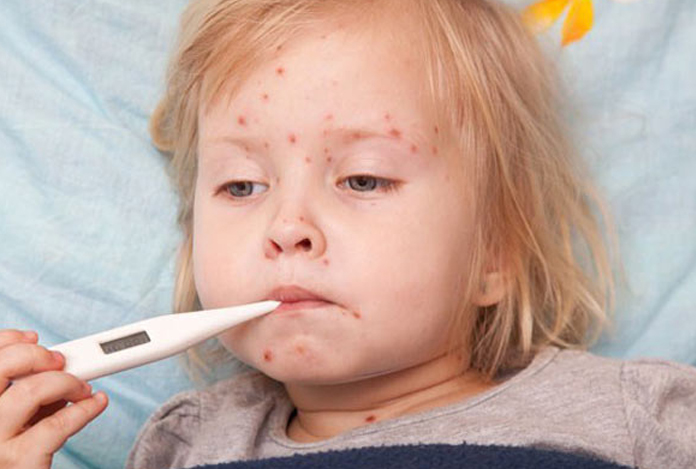
Causes and Prevention of Measles
The measles is caused by the rubeola virus. This virus lives in the mucus of the throat and the nose of an infected person. Measles is contagious three to four days before the development of the rashes and a few days after the rash appears.
Measles gets transmitted through following ways:
- Being close to the infected person when they sneeze or cough
- Having physical contact with the infected person
- Touching surfaces with infected droplets of the mucus and then putting the infected
- Fingers into the mouth, or rubbing the eyes or nose.
Measles can be prevented through following ways:
1. Isolation: An infected person must avoid the social activities involving interaction with other people. As measles is highly contagious, it is advised that the patient must rest and stay away from the people who are not immunized. Children and people with weak immunity must be kept away from an infected person.
2. Vaccination: Immunization against measles can help in preventing measles outbreak. There is a three-in-one vaccination for measles called MMR that helps in prevention of measles, mumps and rubella (German measles). Children will receive the first vaccination in first year of birth, and the second dose is given around the age of four to six. Adults who never had vaccination for measles must request the same from their doctor. However, adults do not require vaccination against measles if:
- They received two booster shots at the age of one
- They were born or lived in the U.S. before 1957
- They are found immune to mumps, measles and rubella after a blood test
- They had two doses of MMR vaccine
Pregnant women and the people who have severe allergy to neomycin or gelatin must not take the vaccine.
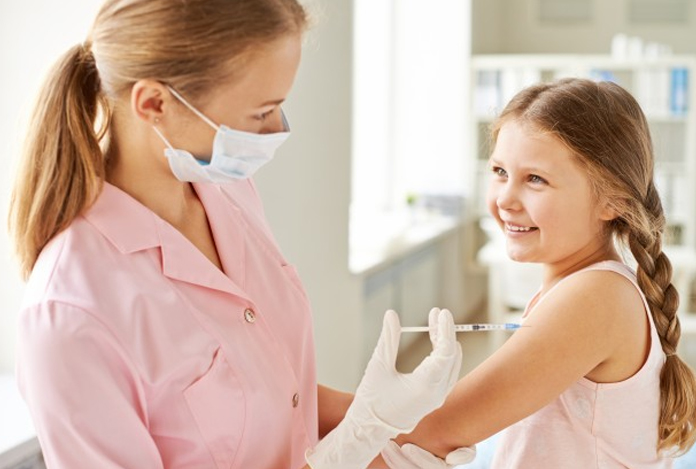
Diagnosis and Tests of Measles
The diagnosis of measles is done by:
- Physical Examination: The doctor will look for the characteristic rashes during measles. These rashes are reddish-brown. There is also the presence of grayish-white spots with white centers inside the mouth and cheeks. These spots are known as Koplik’s spots. Presence of other symptoms associated with measles like fever, cough and sore throat also helps in the diagnosis.
- Blood Test: If the doctor is unsure of measles through physical examination, he might conduct a blood test to detect the virus.

Treatment and Care of Measles
Treatment of Measles:
- Post-Exposure Vaccination: If an adult or infant is exposed to measles, they are given the vaccination within 72 hours of the exposure to the measles virus. This helps in preventing the disease and if it still occurs, the symptoms will be very mild and of less duration.
- Immune Serum Globulin: Infants, people with weak immune system and pregnant women who had exposure to the measles virus are injected with immune serum globulin. This injection is given within six days of the exposure and would prevent measles. If measles still develops, it would have milder symptoms.
- Medications: Fever reducers like ibuprofen (Advil, Motrin), acetaminophen (Tylenol) and naproxen (Aleve) help in reducing the fever that accompanies measles. If there is a bacterial infection like ear infection or pneumonia during measles, the doctor would prescribe antibiotics. A large dose of 200,000 international units (IU) of vitamin A is given for two days to the patients. Aspirin is not recommended for children and teenagers below age of 16, as it can lead to Reye’s syndrome which can be life-threatening.

Care during measles:
- Take more rest during measles
- Drink plenty of fluids to stay hydrated
- Avoid social interaction with other people by avoiding going to school or work place
- Avoid scratching the skin
- Cut the nails short to avoid any cuts in the rashes
- Use an air humidifier to keep the air moist
- Use sunglasses or keep the rooms dark, if light is causing problems
- Use anti-itching creams and cough syrups as prescribed by the doctor, to help in itching and cough respectively
- Avoid reading and watching television during measles, to keep the eyes at rest
- Keep the rooms clean and tidy
- Avoid going out in the sun
- Limit milk and milk products intake

OTC and Self-Management Methods for Measles
The OTC for measles include the fever reducers like ibuprofen (Advil, Motrin), acetaminophen (Tylenol) and naproxen (Aleve), which help in reducing the fever that accompanies measles. The patient might also use vitamin A supplements that are available over-the-counter.
Self-management methods available are:
- As soon as you start noticing rashes, you must visit a doctor immediately for post-exposure vaccination within 72 hours.
- Take the prescribed medication on time, for reducing fever and other physical symptoms associated with measles.
- Have a diet that is rich in vitamin A content.
- Make yourself comfortable in a warm and closed room.
- Stay hydrated by having various fluids, soups and water.
- Eat green leafy vegetables, fruits and a well-balanced diet to boost immunity.
- Do not share your personal items during a measles outbreak.
- If you are pregnant and notice rashes similar to measles rash, you should visit the doctor immediately. The doctor can diagnose measles and give you immune globulin shot to prevent further outbreak.
- Use itch-relief creams on the rashes, only as prescribed by the doctor.
If you experience crustiness in the eyes, you should use a soft wet cloth to clean it. It is better to use two different cloths for the two eyes. These must be kept separately. - Use an air humidifier to moisten and warm the air around. This would soothe the irritated and dry airways.
- Avoid public places like school, workplace, supermarkets etc. when suffering from measles.
- Stay indoors in a warm and dark room. The room must be properly ventilated.
- Rest as much as possible to help body recover faster.
- Use sunglasses to prevent the light from reaching the eyes. Avoid going out in the sun to prevent trouble in eyes.
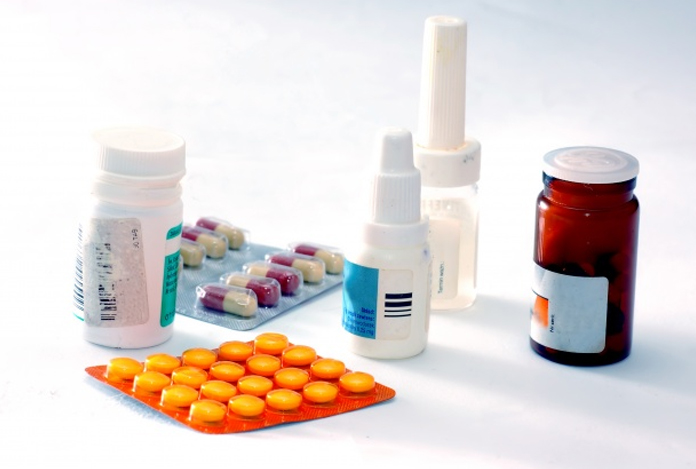
Natural Ways to Cure Measles
The natural ways to cure measles are:
- Neem Leaves or Indian Lilac: Neem has natural anti-microbial and anti-fungal properties. Neem leaves can be applied on the itchy rashes as a paste. This paste is made by grinding the neem leaves into a thick paste. Apply this paste on the rashes and leave it to dry. Wash the dried paste by lukewarm water. Do this daily for about two weeks. This helps in relieving the itching.
- Olive Leaves: These leaves have natural anti-viral properties that help in eliminating the measles virus. These can be applied over the rashes in a form of thick paste. This paste can then be cleaned by lukewarm water. This remedy must be used once or twice daily, for about two weeks.
- Bitter Gourd: The juice of bitter gourd when taken along with turmeric and water helps in combating various symptoms of measles. It contains zinc, vitamin C, iron, dietary fiber and potassium, which helps in boosting the immunity.
- Turmeric: It is rich in anti-oxidants and has natural anti-septic properties. Take one teaspoon of turmeric with honey and lukewarm milk. Consume this milk two times daily, for about a month.
- Coconut Water: It is a rich source of anti-oxidants. It also helps in eliminating the toxins from the body. While suffering from measles, one must consume coconut water daily till one recovers completely. It keeps the body hydrated and boosts the immune system.
- Licorice: The roots of licorice are known to have anti-viral, anti-fungal and anti-bacterial properties. Mixing half tablespoon of licorice powder to honey and lukewarm water helps in relieving pain due to coughing and sore throat. Consume this mixture daily for about two weeks. One can also consume licorice candies.
- Indian Gooseberry or Amla: It is an excellent source of vitamin C and is high in anti-oxidants. Amla juice when consumed with water daily for about two weeks helps in relieving the itching and burning. It also enhances the immune system.
- Eggplant Seeds: Eggplant seeds have high anti-oxidant content that helps in strengthening the immune system. It is also rich in zinc and vitamin C content that aids in the healing process. Consume half to one gram of eggplant seeds daily for three days.
- Orange Juice: Oranges have high vitamin C content. Loss of appetite is a common symptom of measles. Consuming orange juice at regular intervals helps in increasing the appetite during measles. It keeps the body hydrated and also helps in boosting immunity.
- Lemon Juice: Few drops of lemon juice should be consumed with water daily. This is an effective remedy for measles.
- Garlic: Garlic is a known effective cure of measles. Grind few garlic cloves along with honey. This mixture must be consumed daily for relieving symptoms.
- Butter: Mix equal portions of butter and sugar candy, and consume two tablespoon of this mixture daily to cure measles.

Health Tip by Expert
If a pregnant woman notices rash that is similar to measles rash, she should immediately visit the doctor. It should not be mistaken for a common pregnancy rash. If diagnosed with measles, she would be given immune serum globulins to prevent further measles outbreak. If the measles still develops, the symptoms will be milder and for a short duration. Children need extra protection from measles as it may have fatal results in them. Precaution, healthy diet and proper treatment help an infected person recover from the disease.
